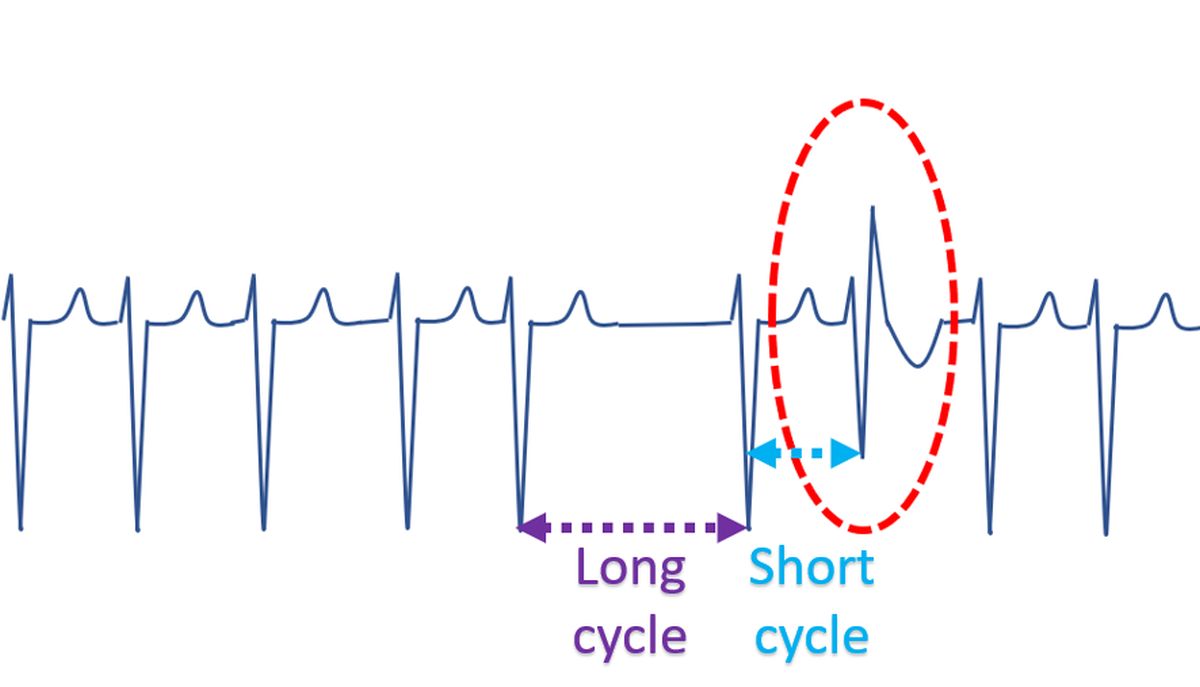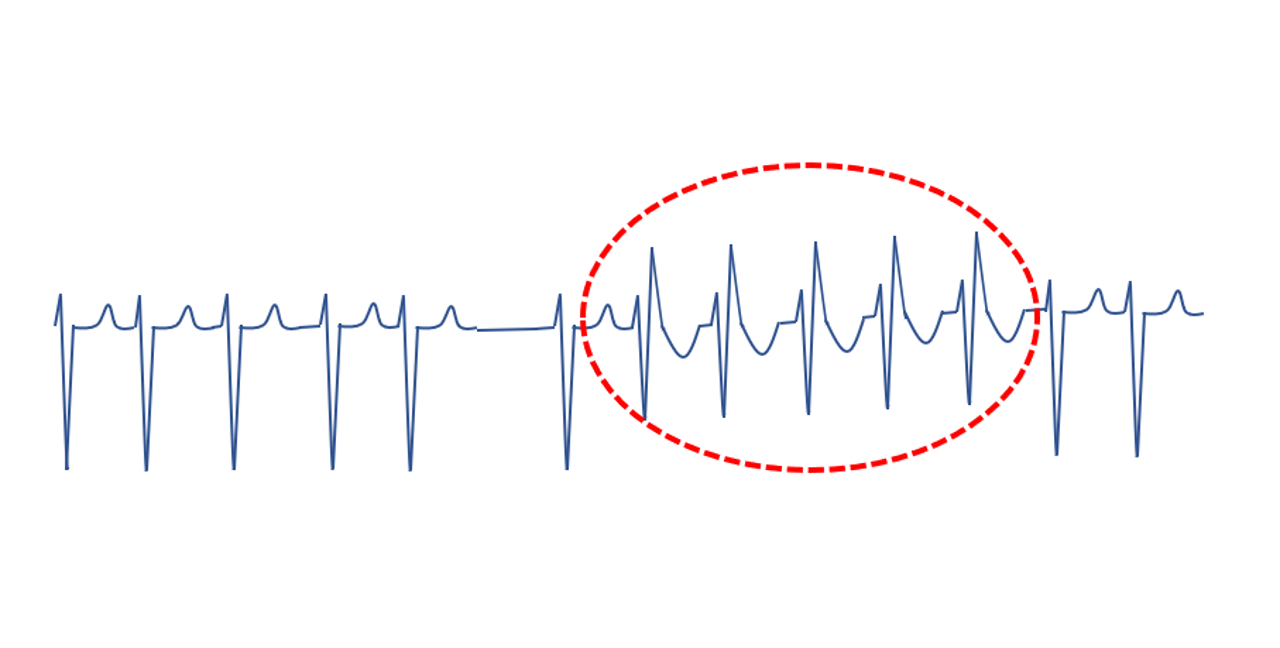Ashman phenomenon in atrial fibrillation
Ashman phenomenon in atrial fibrillation
When there is short RR interval following a long RR interval, the QRS terminating the short RR interval is wide due to aberrant conduction with right bundle branch block pattern, known as Ashman phenomenon. This is because refractory period lengthens when RR interval increases. Aberrancy is more likely to occur in the right bundle than the left bundle. The aberrant beat can be mistaken for a ventricular ectopic beat.

Aberrancy may be sustained in subsequent beats due to concealed trans septal conduction. This will resemble a short run of ventricular tachycardia (VT).

The original description of Ashman phenomenon was in 1947 by Gouaux and Ashman [Cited in 1].
The Fisch criteria for the diagnosis of Ashman phenomenon has been described [2]. These include: a relatively long cycle immediately preceding the cycle terminated by the wide QRS complex. right bundle branch block pattern of aberrancy with normal orientation of the initial QRS vector, irregular coupling of aberrant QRS complexes and lack of a fully compensatory pause.
References
- Surawicz B, Knilans TK. Chou’s electrocardiography in clinical practice. 6th edn Philadelphia: Saunders Elsevier, 2008: chapter 17, ventricular arrhythmias; 405–39.
- Vivek Singla, Bhupinder Singh, Yadvinder Singh, Cholenahally Nanjappa Manjunath. Ashman Phenomenon: A Physiological Aberration. BMJ Case Rep. 2013 May 24;2013:bcr2013009660.

